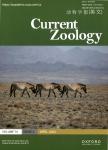Evaluating the Ryman-Laikre effect for marine stock enhancement and aquaculture
Evaluating the Ryman-Laikre effect for marine stock enhancement and aquaculture作者机构:National Marine Fisheries Service Northwest Fisheries Science Center 2725 Montlake Boulevard East Seattle WA 98112 USA Norwegian Institute for Nature Research (NINA) Trondheim 7485 Norway
出 版 物:《Current Zoology》 (动物学报(英文版))
年 卷 期:2016年第62卷第6期
页 面:617-627页
核心收录:
学科分类:090801[农学-水产养殖] 0710[理学-生物学] 0908[农学-水产] 07[理学] 070601[理学-气象学] 0905[农学-畜牧学] 09[农学] 0906[农学-兽医学] 0706[理学-大气科学]
基 金:supported by a grant from the Norwegian Environment Agency
主 题:增养殖 海洋 评价 野生种群 股票 近亲繁殖 繁殖生产力 群体大小
摘 要:The Ryman-Laikre (R-L) effect is an increase in inbreeding and a reduction in total effective population size ( ) in a combined captive-wild system, which arises when a few captive parents produce large numbers of offspring. To facilitate evaluation of the R-L effect for scenarios that are relevant to marine stock enhancement and aquaculture, we extended the original R-L formula to explicitly account for several key factors that determine , including the numbers of captive and wild adults, the ratio of captive to wild (), productivity of captive and wild breeders, and removal of individuals from the wild for captive breeding. We show how to provide quantitative answers to questions such as: What scenarios lead to no loss of effective size? What is the maximum effective size that can be achieved? and What scenarios insure that will be no smaller than a specified value? Important results include the following: (1) For large marine populations, the value of becomes increasingly important as the captive contribution increases. Captive propagation will sharply reduce unless the captive contribution is very small or is very large (∼10 or higher). (2) Very large values of are only possible if wild is tiny. Therefore, large wild populations undergoing captive enhancement at even modest levels will suffer major reductions in effective size unless wild is a tiny fraction of the census size (about 10 or lower).



